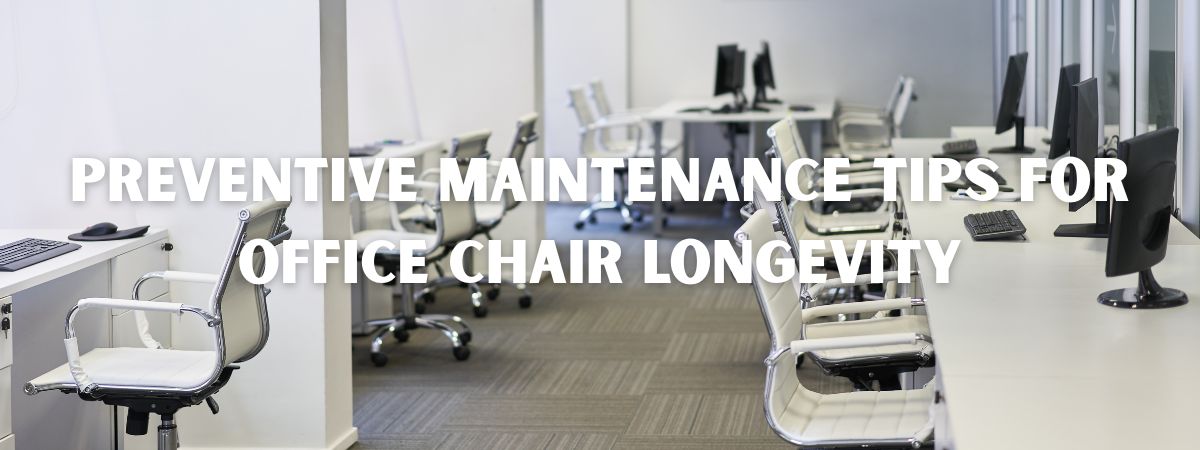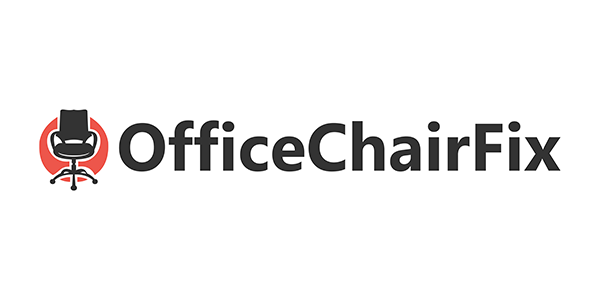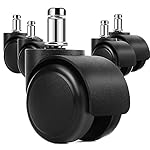Office chairs are a long-term investment in your comfort and productivity. Without regular care, even the best chairs can wear out prematurely, leading to squeaks, wobbles, or fabric damage. Fortunately, a few simple preventive maintenance steps can extend the life of your office chair and keep it functioning like new for years.

1. Regularly Tighten Screws and Bolts
Over time, the constant shifting and reclining in an office chair can loosen bolts and screws. At least once every couple of months, check all visible fasteners—especially those connecting the base, arms, and backrest. Use a basic Allen wrench set or screwdriver to tighten them back into place and prevent structural wobble.
2. Keep the Wheels Clean
Casters collect hair, dust, and debris that can cause them to jam or wear down faster. Flip the chair over and remove each wheel to clean out any gunk using a brush or tweezers. For easier cleaning and smoother movement, consider upgrading to a set of rollerblade-style office chair wheels that are quieter and easier on floors.
3. Lubricate Moving Parts
If your chair starts squeaking or the height mechanism feels stiff, it might need lubrication. Apply a silicone-based lubricant to the moving joints, including the tilt mechanism, gas lift, and wheel spindles. Avoid using WD-40, which can attract dust. Instead, use a silicone lubricant spray made specifically for furniture or machinery.
4. Protect the Upholstery
Chair upholstery—whether mesh, leather, or fabric—can wear down from spills, friction, and sweat. Use a fabric protector spray on cloth seats to guard against stains. For leather or faux leather, apply a leather conditioner every few months to prevent cracks and fading.
5. Don’t Overload Your Chair
Every chair has a weight capacity. Exceeding this limit stresses the hydraulic lift, frame, and base—leading to early failure. If you need a more durable chair, look for Big and Tall office chairs rated for higher weight and reinforced construction.
6. Adjust the Chair Properly
Improper use or poor ergonomics not only affect your health but can also wear out parts faster. Make sure your chair is set up to support your body correctly—armrests at elbow height, feet flat on the ground, and the lumbar curve aligned. Consider adding a lumbar support cushion to preserve both your posture and your chair’s shape.
7. Store and Use It on Suitable Flooring
Hardwood and carpeted floors each affect caster wear differently. If your chair is on carpet, avoid dragging it—use a chair mat to protect the wheels and flooring. For hardwood, use soft rubber wheels or mats to prevent scratches.
8. Replace Worn Parts
Most office chair parts are replaceable. If your gas cylinder no longer holds height or the arm pads are torn, you can order replacements without buying a whole new chair. Popular components include gas lift cylinders, armrest pads, and wheel sets.
9. Avoid Excessive Reclining
Frequent full reclines or rocking too far can put stress on the tilt mechanism. If you’re using this feature daily, make sure the tension is adjusted to your weight. If your recline feature is sticking or sagging, inspect the tension knob or spring for damage and consider using a replacement tilt mechanism if needed.
10. Perform a Monthly Inspection
Set a monthly reminder to check the integrity of the chair—look for cracks, wobble, or performance issues. Catching small issues early prevents bigger breakdowns and helps you plan part replacements proactively.
Final Thoughts
With just a few minutes of care each month, your office chair can deliver years of smooth performance and comfort. From lubricating joints to replacing casters or protecting upholstery, preventive maintenance is the key to saving money and extending chair life. Whether you’re working from home or in a busy office, a little upkeep goes a long way.


